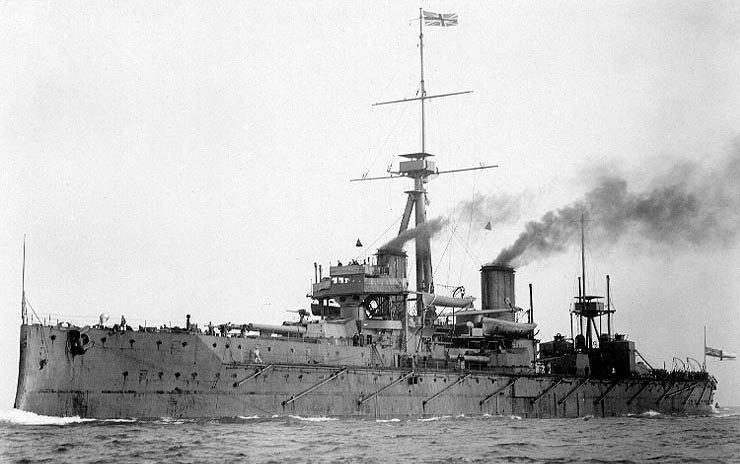As the proud possessor of the world’s longest coastlines and home of the world’s sixth-largest merchant navy, one might have thought that the newly independent Canada would have an interest in developing a strong navy. In fact, as a Dominion of the British Empire, it was able to avoid the bother of that by relying on the power of the Royal Navy to protect its shores.
It was not until the beginning of the 20th century when stirs of nationalism and the eruption of an international military crisis coincided that Canadian governments began to think seriously about undertaking the defence of our coastal waters.
At one stroke, every other battleship (including all the British possessed) was rendered obsolete, and as other navies began at once to copy the Dreadnought’s design, British naval supremacy was compromised. This was the beginning of the dreadnought race, a competition between Britain and other sea powers to see who could put more of these superships on the waves.
The American, French, Japanese, Italian, and even South American navies were all involved, but particularly worrisome to the British was the aggressive German Empire under Kaiser Wilhelm, which was committed to expanding its overseas holdings, boldly launching battleship after battleship. This forced the Royal Navy into a hugely expensive construction program—if the Germans put one dreadnought to sea, Britain had to counter with two. Desperately, London looked abroad for financial help and asked its imperial holdings to contribute.
Though other Dominion governments such as Australia and New Zealand allocated funds for the Royal Navy’s battleship plan, Canadian politicians were of mixed opinions. The majority of Canadians at the time were of British descent and were fond of the Empire, but enthusiasm for the mother country had waned since the British had preferred American interests to Canadian in the 1903 Alaskan border dispute.
Conservative Opposition Leader Robert Borden (whose picture graces the $100 bill) recommended sending Britain money for three dreadnoughts, while Liberal Prime Minister Wilfrid Laurier (whose image may be found on the $5 bill) wanted an independent Canadian naval force which, in theory, would allow Britain to save money by withdrawing from North American waters. Extremely important in this debate was the position taken by many Quebecers who strongly opposed any involvement in imperial wars. The leader in this brouhaha was Henri Bourassa, who founded the newspaper Le Devoir to add his voice to the cause.
On May 4, 1910, the Laurier government enacted the formation of a branch of the Marine and Fisheries Department, the Canadian Naval Service (its name was changed to the Royal Canadian Navy the following year). A college to train sailors was established in Halifax. The force’s first ships were not impressive: two obsolete cruisers, HMCS Rainbow and HMCS Niobe, carrying six-inch guns, one for the Pacific and the other for the Atlantic coast. Pro-imperial critics scorned this pinch-penny effort as a “tin-pot navy” while opponents in Quebec predicted an imminent adoption of conscription.
When Laurier’s Liberals were defeated in the 1911 election, Borden tried to get Parliament to fund the three dreadnoughts he had earlier proposed. Although the House of Commons passed the measure, the Liberal majority in the Senate quashed the idea. With this defeat and continued uproar in Quebec, support for a strong navy languished until the outbreak of hostilities in 1914. World War I found Canada unprepared to contribute much at sea; the HMCS Niobe had run aground in 1911 and was out of service. The premier of British Columbia, Sir Richard McBride, felt forced to secretly purchase two submarines from an American shipyard to protect his province’s waters.
The glory days of the Royal Canadian Navy would lie ahead. World War II saw Canada’s navy participate to great effect against German U-boats in the Battle of the Atlantic and in the D-Day landings, as well as fighting in the Pacific against the Japanese Empire. By 1945, Canada possessed one of the largest navies on the planet.






